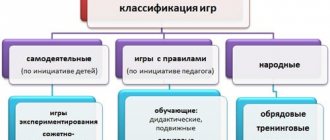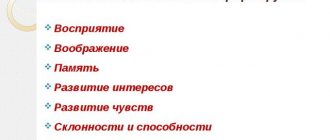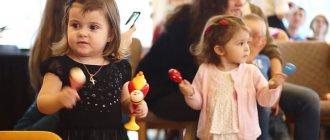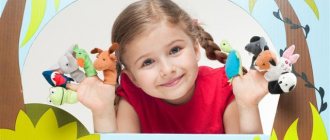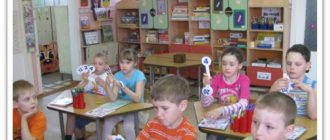Aesthetic education is implemented at every stage of personal development. It becomes more effective the earlier the child enters the sphere of targeted aesthetic influence, which should be uniform and combine all activities, any aspects of his life.
The aesthetic education system is aimed at:
- Creating in children a set of elementary knowledge and impressions, on the basis of which an interest in aesthetic phenomena and artistic objects is formed.
- Development of abilities for aesthetic experiences, formation of personality qualities that will allow one to appreciate highly artistic objects and phenomena and provide the opportunity to enjoy their contemplation and possession.
- Awakening creative abilities in students. An aesthetically developed personality becomes an active creator, trying to bring his life and everything that surrounds him into submission to the learned canons of beauty.
The main wealth for society is a creative personality
In everyday work, in everyday life, and in communication, adults and children encounter aesthetic phenomena. There is beauty and ugliness everywhere. It has a tragic and comic influence on different areas of life. Beauty pleases, stimulates activity, ugliness repels. Comic phenomena help you see shortcomings, tragic phenomena make you sympathize.
Aesthetic education opens the child’s soul to new forms, sounds, colors, helps a deeper understanding of the world, and promotes harmonious development and self-discovery. Developed creative thinking contributes to the search for new ways, including in the field of science, economics, and production.
The tasks of society bring to the fore new demands on people. Since it becomes the main component of the productive forces, it must be fully developed. It is impossible to educate a creative person who has the need for creative activity without the efforts of society and policies specifically aimed at this. Therefore, the most important means of qualitative development of human nature is aesthetic education from a very early age.
Read: Means of aesthetic education.
Principles of aesthetic education
Creative abilities must be developed from birth. From early childhood, one must instill good taste and develop the need to communicate with the sublime. Aesthetic education is aimed at developing the ability to see beauty and following the rules of good behavior, experience of friendly relations with others. Its basis is the following principles:
- Interaction. Any action should strive for aesthetic perfection: communication with peers, nature, objects of art, independent household and work activities.
- A complex approach. Education gives tangible results if creative activity is based on interdisciplinary connections and connects various types of art.
- Socialization. Aesthetic and artistic activity is not divorced from life. This is how students develop an adequate attitude towards their environment; they will be able to find beauty in its various manifestations.
- Systematicity. General and aesthetic development are interconnected. With this approach, the emotional sphere and all cognitive processes develop harmoniously.
- Independent creativity. The method of aesthetic education is most effective when applied to preschool children if they master some creative activities themselves: dancing, drawing, sculpting or singing in a choir.
- Aesthetics should dominate all life. Little children need to live in beauty. The main educational meaning is to understand the importance of accuracy and politeness. Proper aesthetic development is influenced by the beauty of the room and clothing.
- The age of the student is taken into account. Educational means are selected according to age. The formation of personality in more mature years depends on how correctly aesthetic perception was formed in younger schoolchildren.
Musical education in kindergarten
The role of the family in artistic and aesthetic education
No matter how important the kindergarten and all kinds of clubs and studios play in a child’s life, the most significant role in shaping his artistic taste and idea of beauty will be played by his family. It is the parents and their contribution to the child’s upbringing that will play a decisive role in the development of his personality in the future.
Only parents can help their child start music lessons
What should you pay attention to first and what forms of organizing and conducting aesthetic education for preschoolers will be more effective?
Personal example. Who is the first moral and aesthetic ideal in the life of any person? Of course, his parents. It is their behavior and habits that the child will unconsciously copy in the first years of life, and it is they who will subsequently develop into established and strengthened forms of behavior. Therefore, any parent who wants to raise a well-mannered and cultured child should be primarily interested in self-development and self-education.
The manners of behavior accepted in the family, the forms of interaction with others, the criteria by which the beautiful is separated from the ugly, what is acceptable from what is unacceptable, all this will subsequently be adopted by the child. And on these foundations his worldview, view of the world, etc. will be built.
A children's book is one of the means of aesthetic education.
Proper aesthetic education of preschool children in the family and its methods are built on many basic components of its organization:
- A culture of appearance is expressed by observing body culture, the rules of basic hygiene, the ability to choose an outfit in accordance with the requirements of the environment, and the ability to create an overall aesthetically consistent composition of clothing and accessories.
- Culture of emotions; the ability to sincerely show one’s condition without crossing the boundaries of what is permitted.
- Reasonable discipline; the presence of mandatory regulations.
- General artistic taste. The child should be able to see around him works of art used to decorate everyday life: these could be paintings, works of decorative and applied art, etc.
- Aesthetics of everyday life. The opportunity to aesthetically design the surrounding space of the house helps the child take for granted his home and value it. This is where the development of respect for one’s home and the ability to maintain cleanliness and order in it begins.
- Communication culture. The opportunity to have confidential conversations with your child on current and exciting topics. Formation of a child’s idea of subordination and distance in communication.
- The force that awakens a child’s artistic taste is also nature, which embodies the harmony and beauty of the world. Walking in the fresh air, accompanied by an adult's stories about the world around him, will teach him to see beauty in it. And later use it as a source of inspiration for constructive creative activity.
- Their favorite holidays can also tap into a child’s creative skills. Parents can involve their child by involving him in preparing for the holiday. Invite him to come up with, draw, and later bring to life the original design of the room or playground. Thanks to this, the child gets the opportunity not only to develop and discover his talents, but also to share his first discoveries with other children.
Everyday culture is an important factor in cultivating a sense of beauty
Forms of organization of aesthetic education
Methods of artistic and aesthetic education have the best results when they are interconnected. Teachers should combine and vary them.
The methods differ in:
- methods of transmitting information;
- practical form of organization.
The methods are divided into:
- visual (when children get acquainted with examples of art);
- verbal (adults tell, explain);
- practical (testing, creative work).
Visual methods (looking at a picture, listening to a piece of music together) suggest the emotional content of the moment. An acquaintance with objects of art should make a vivid impression on the child so that it is remembered.
The form of organization is as follows:
- when adults show an example of an action, they invite the child to repeat a poem or sing a song;
- Teachers invite the child to independently determine how to complete the task: sculpt, cut, or draw something.
It must be remembered that the aesthetic education of preschoolers is somewhat different from the methods of working with school-age children. For children, the emphasis is placed on visual perception; they are gradually brought to realize the importance of cleanliness and order. Older children are able to express their creativity. Preschoolers learn to evaluate, and schoolchildren are already creating a product and have a creative approach in the process of creating an object.
Methods of aesthetic education
The main methods that promote the development of children’s aesthetic senses, the ability to evaluate, and creatively apply acquired knowledge and skills include:
- Method of persuasion. It is used only when the phenomenon being studied is beautiful. Pupils have an emotional response when meeting works of art and participating in a holiday. The method can be considered equally verbal, because Children's observations receive commentary from an adult and awaken thoughts and feelings.
The teacher must select the most impressive works of art and take care of the appropriate mental mood of the children. The subject must be well mastered by the teacher, and the speech must be precise and expressive. When attention is focused on the beautiful, the teacher gives the concept of “what is good and what is bad.”
- Training method. It implies a practical action, an exercise aimed at changing the environment, instilling socially accepted cultural behavior skills. The content of the method is to teach the child to see and appreciate beauty, and to act accordingly.
Systematic exercises and children's artistic practice promote children's activity.
- Method of problem situations. Allows creativity and the desire to act to awaken. The teacher invites the students to find a way to realize their artistic idea themselves. For example, after listening to a fairy tale, children are asked to portray one of the characters. The task can be simple or complicated by the poor choice of the hero. The child learns to think on his own, comes to an independent decision on how best to realize his plans: draw, sculpt, compose a poem.
- Encouraging empathy. A sympathetic person who knows how to empathize and compassion experiences joy from communicating with people, and celebrates successes and victories with them. Children who can sympathize are more open and friendly, they have more friends, and they are less likely to find themselves in conflict situations.
Emotional reading of fairy tales, discussion of illustrations, a puppet show or a musical number will help here.
Traditional methods of influencing students
Story. It should be emotional, have a plot outline, be educational, influence the imagination, but not interfere with self-assessment.
Means of aesthetic education
Lecture. Dedicated to more complex topics, it is appropriate for classes with older children. Equipping the lesson with visual material will give greater imagery. It is permissible to raise problematic topics, push students into discussion, and persuade them to express their point of view.
Conversation. This is not a teacher’s monologue in front of children, but a mutual emotional exchange of opinions. During the conversation, the teacher uses visual material, interprets scientific concepts, emphasizes certain beautiful characteristics in works of art, work, real and fictional characters in literature, theater, and cinema.
Dispute. Designed to discover and bring together different points of view, raise a problem, and attract children to discuss it. The task of adults is to carry out serious preparatory work to help identify positions, stimulate dialogue, and direct the dispute into a cultural direction.
Means and methods of aesthetic education of preschool children.
Work on aesthetic education in a modern kindergarten should be based on the following principles.
• Aesthetic education is carried out in conjunction with all educational work in a preschool institution.
• The principle of the relationship between training and development. The entire educational process in preschool educational institutions is built on the basis of the unity of education and training, which is developmental in nature and leads to the aesthetic, moral and intellectual development of children. Particular importance is attached to the relationship between aesthetic education and intellectual and moral education.
• Children's creativity is connected with life and reflects all the diversity of its manifestations, which predetermines the variability of the content, forms and methods of organizing children's artistic activities.
• Integration of different types of art and artistic activities in the aesthetic development of children. Integration provides a versatile impact on the child, promotes knowledge of objects and phenomena from different sides based on the perception of reality by various senses and the transfer of images perceived or created by the child’s imagination in various forms of artistic activity using means of expressiveness specific to a particular activity (musical, visual , theatrical and play).
• The artistic and aesthetic principle of material selection determines the strategy for selecting works, orients the teacher and the child to the fact that in front of them are works of verbal art that reveal the richness of the surrounding world and human relationships, give rise to a sense of harmony and beauty; learn to understand the beauty in life.
• The principles of nationality and cultural conformity, compliance of the modeled picture of the world with the self-awareness of the people whose culture is being studied. At the same time, the culturological principle makes it possible to introduce preschool children to the culture of different peoples of the world, to reveal the originality and uniqueness of works of folk art and fiction.
• An individual approach to artistic and aesthetic education, based on identifying individual differences in children and determining the optimal ways to develop the creative artistic abilities of each child, etc.
• Continuity in the aesthetic education of children of preschool and primary school age.
The above principles synthesize all aesthetic concepts around themselves, revealing, justifying and developing them. They substantiate the aesthetic view of the world, which predetermines the content of aesthetic education.
The content of aesthetic education includes two components:
• content of educational activities for the development of children's artistic activity;
• the content of educational influences on the artistic and aesthetic development of pupils in the process of educational activities of all kindergarten employees and the family as a whole.
The content of both components in a particular preschool educational institution is determined by the educational program of the preschool educational institution, modern conceptual approaches to determining the essence and content of the child’s aesthetic development.
2. Methods of aesthetic education are :
Verbal methods: explanation, analysis, example of an adult, description. Showing as a method of education is used during initial acquaintance with the subject of aesthetic reality. It is important for the teacher to determine the object of the display and create conditions so that the children’s attention is focused on what they are shown and asked to listen to.
When using these methods, it is very important that the teacher knows how to show children his feelings, his attitude, and knows how to express feelings. An impassive, unemotional teacher will not be able to awaken feelings and relationships in a child. An important professional trait of a preschool teacher, and a teacher in general, is artistry.
Practical methods: demonstration, observation, exercise, explanation, method of search situations. These methods are discussed in detail in the methods of visual activity and music education. are interesting and effective . Creative tasks can also be used when teaching children dance movements, in theatrical games, when creating musical and game images, in drawing, when selecting materials for images, etc. This is a very effective pedagogical technique, since it always evokes a positive emotional mood and interest in children . But creative tasks and any manifestation of creativity must necessarily be combined with teaching the skills of artistic expression. If a child does not have drawing skills, he will not be able to create something creative, despite the conventional understanding of this term in relation to preschoolers.
The means of implementing the content of artistic and aesthetic education are selected by the teaching staff in accordance with the goals and objectives set for the preschool educational institution:
• Aesthetic communication is a special condition and means of aesthetic education. The main task of the teacher in the process of aesthetic communication is the ability to interest children, ignite their hearts, develop creative activity in them, without imposing their own opinions and tastes. The teacher must awaken in every child faith in his creative abilities, individuality, uniqueness, the belief that he came into the world to create goodness and beauty, to bring joy to people.
• Nature: it contains a variety of sensory and aesthetic properties and, thanks to this, has enormous potential for a multifaceted impact on the child.
• Art as one of the most universal means. Art (music, literature, theater, works of artistic and decorative creativity) plays a huge role in the formation of a child’s spiritually developed personality, in improving human feelings, in understanding the phenomena of life and nature. This not only contributes to the formation of sense organs designed to perceive certain types of art, but also activates aesthetic consciousness, that is, it allows a person to move from a psychophysical attitude towards works of art to an analytical attitude towards it. Communication between children and art improves aesthetic taste, allows them to adjust their aesthetic ideal, and correlate the value guidelines of different eras and peoples.
• The surrounding subject environment. The equipment and design of the kindergarten, the appearance of the children and the teacher should be cultural and beautiful. Not only beautiful objects in themselves educate children aesthetically, “but also that living work, that caring attitude of the teacher and children to the things that need to be educated.” In turn, an aesthetically organized environment of life, work and communication with adults and peers increases the activity, effectiveness, and creative nature of artistic and aesthetic activities of preschool children.
• Independent artistic activities of children (musical, visual, artistic and gaming). The development of independent artistic activity is considered as a process of developing in children the ability to feel, understand, evaluate, and love art, the development of the need for artistic and creative activity, and the formation of a child’s worldview through the means of art.
• Various types of games: didactic, active, role-playing, dramatization games.
• Different types of work of children in kindergarten.
• Physical exercises and elements of sports games. In the process of developing various types of artistic activities of children, motor skills, manual skill, micro- and macro-movements, and hand-eye coordination develop. This brings together the tasks of aesthetic and physical education. Physical exercises combine the achievements of physical beauty and spiritual and moral development. The loss of this means from the system of aesthetic education violates the harmony of the physical and spiritual development of children. In the future, the visual and artistic activity of preschool children itself acts as a psychological and pedagogical condition that contributes to the protection of the child’s psychophysical and psychological health and his emotional well-being.
An important means of aesthetic education of children E.A. Fleurina counted the holidays. The main thing in the holiday is the idea, design in music, visual arts, artistic expression - all this together contributes to the integration of different types of artistic and aesthetic activities of preschoolers and, most importantly, the unity of the intellectual and sensual in the process of aesthetic education of children.
3. Work on aesthetic education in kindergarten is closely connected with all aspects of the educational process, therefore the forms of its organization are very diverse:
1. Games.
In the implementation of aesthetic development and education of children in preschool educational institutions, play acts as a means of integrating all types of art and artistic and creative activity of children (G.G. Grigorieva, T.N. Doronova, S.G. Yakobson). In addition, the motives for play and artistic and creative activities of children are similar.
The specificity of children's drawing is that when drawing, the child realizes the same motives of activity as in the game. He uses “doodles” and “drawing diagrams” only as substitute objects. The desire to talk about himself and his experiences in a drawing, attracting others to empathize, appears in the child later. It will gradually develop into the child’s desire to express his worldview, impression, attitude towards the phenomenon or event that struck him. This circumstance affects the specifics of all stages of the creative process in preschoolers.
2. Classes.
The main task of classes for the development of artistic and aesthetic activity is to form in children the structure of the activity itself. For example, teaching children how to sculpt, draw, and appliqué. In accordance with this, the structure of classes with preschool children follows the course of development of children's visual activities - it has three parts: examination, performance and evaluation. These parts are present in all classes, but the nature and duration of each of them varies depending on the goals, program content of the classes, and the level of preparation of the children.
During the examination part of the lesson, the sample is examined and analyzed; looking at, feeling or tracing the contour of a nature; reading and analyzing text; conversation about what was seen, analysis of the visual task; drawing up a description of the examined sample, object, situation. It is in this part of the lesson that the role of the adult is especially great. He plans and manages the analysis of a sample, nature, text.
During the performing part of the lesson, children in most cases act independently: sculpt, draw, stick. Depending on the year of study, drawing, modeling, application is carried out according to imitation, model, from life, according to the idea, according to the children’s plan, on a given topic. The role of an educator or art studio teacher comes down to observation and individual assistance.
At the end of the lesson - in the evaluation part - the teacher again actively provides guidance. At the end of the work, children need to be helped to match the resulting image with an object, situation or text.
3. Exhibitions of children's works.
The adult must save and file all children’s work in separate folders. From time to time they are used for group, personal or collective exhibitions. They contribute to the fact that children begin to value their work, strive for good results, and form the emotional attitude of children and their parents to productive activities. On the other hand, exhibitions of children's drawings make it possible to trace the dynamics of a child's learning ability from the primary to the preparatory school group, and to visually present the results of educational, correctional and developmental work in preschool educational institutions.
4. Excursions.
The excursion includes:
• preparing the teacher (development of program tasks, selection of equipment, etc.) and children for the excursion;
• the use by adults of a variety of methods and techniques for organizing children's perception on excursions, when it is possible to conduct observations and study of various objects and phenomena in natural conditions or in museums, as well as at exhibitions;
• organizing a variety of artistic and aesthetic activities for children during or after the excursion.
5. Holidays and entertainment.
Entertainment as a form of work with preschool children is held once every two weeks. The entertainment content is varied. These can be themed literary and musical evenings or “gatherings” (on a folklore basis), children’s concerts, shows (all types of theater), musical and literary concerts, sports entertainment, performances, dramatization games and musical fairy tales, fun games, walks with surprises, quizzes and competitions.
Types of festive activities, in turn, are divided into concerts, theatrical performances, performances, folklore holidays based on folk traditions, complex classes, excursions with children's performances, thematic classes, and matinees.
According to A.I. Burenina, S.I. Merzlyakova, T. Tyutyunnikova and others, in the practice of modern preschool educational institutions there are four forms of organizing children's matinees, which differ both in structure and in the methods of preparation and conduct.
The above-mentioned teachers call the first form “entertainment”, which is based on a game idea, an “undertaking” corresponding to the content of the holiday, unfolding in a certain plot.
The second form, the most popular at present, is the “amateur concert”, demonstrating the “talents” and individual capabilities of young artists.
The third form is “theatrical performance,” which is based on a dramatization game based on an author’s, folk tale or a fictional plot. Unlike the first form, where the main thing is surprise and improvisation, dramatization games grow out of rehearsals, which should be understood not as “repetition of what has been learned”, but as “search for actions and interactions”, “entering into character”.
And finally, the fourth form of organizing holidays, according to the authors, is built on the basis of folk holidays and is subject to cultural and historical traditions. The content of the most typical of them (Maslenitsa, Christmas, Christmastide) is disclosed in numerous publications. When preparing such matinees, it is important not to distort the meaning of folklore holidays and select the appropriate repertoire. The best sources of the repertoire, according to A.I. Burenina, S.I. Merzlyakova and T. Tyutyunnikova, are materials prepared by ethnographers and art historians (G.M. Naumenko, N. Shangina, etc.).
4. The relationship between aesthetics and other areas of education of preschool children
Aesthetic education is a purposeful, systematic process of influencing a child’s personality in order to develop his ability to see the beauty of the surrounding world, art and create it. They see the main result of aesthetic education in the formation of the child’s aesthetic culture.
Aesthetic culture includes the formation of a culture of communication, behavior and activity in the process of aesthetic perception of art and reality, artistic and creative activity, fine art and visual activity, etc. Thanks to this, the child develops the ability to fully perceive and correctly understand the beauty in reality and art, not only the artistic horizons expand, but also feelings are organized differently, the spiritual development of the individual is carried out and a creative attitude to life is formed. Because “the meaning of art is not only to reflect reality, but also to strive for its transformation, change, improvement in accordance with the artist’s ideals.” In this regard, in the process of forming an aesthetic culture, it is especially important to aestheticize the subject-developmental and spatial environment of children’s development and the intersection of the lines of socio-moral, general intellectual and general cultural directions of development of the child’s personality. Therefore, aesthetic education turns out to be closely related to other areas of educational work in kindergarten.
For example, aesthetic education in the process of physical education and recreational work presupposes the harmonious development of children of different body types, the formation of simplicity and grace of movements, grace, and the assimilation by children of values and ideas about a healthy lifestyle as a manifestation of the harmony of physical and aesthetic development. In this regard, the means of physical and aesthetic education can be integrated. This determines the role of movements, games and music in physical and aesthetic education. In this regard, special importance can be given to the aesthetic characteristics of folk outdoor games (game openings, dialogue, counting rhymes, original figures of speech, unique Russian melodiousness, rhythmic clarity.
The connection between aesthetic education and mental education is also undeniable. This is evidenced by the results of research by E.A. Flerina, PM Chumicheva, N.A. Kurochkina, N.M. Petrukhina and others. The intersection of the lines of aesthetic and mental education is facilitated by:
• formation of ideas about harmony;
• teaching children to understand what the author said, what he wanted to express, that is, to highlight the personal meaning of creating a work of art;
• teaching children to perceive and evaluate the artistic means used by the author;
• inclusion of the experience of cognition, experience and transformation (in the imaginary plane) in the process of perception of a work of art with the subsequent expression of this experience in activity, etc.
No less obvious is the connection between the aesthetic and moral education of children. According to N.A. Vetlugina, its formation is the most important task in raising a preschool child. “Teaching to distinguish between good and evil in human relationships, to perceive the beauty of forms, lines, sounds, colors - this means making it better, more moral, more meaningful,” she wrote.
The formation of moral and aesthetic ideas includes:
• the formation of ideas about a person’s appearance as an element of his moral character, a respectful attitude towards neatness and cleanliness and the formation of an idea of a person’s inner beauty as a manifestation of his moral education, the importance of the unity of external and internal beauty;
• developing the ability to be critical of the discrepancy between a person’s appearance and the nature of his behavior, the ability to be critical of manifestations of bad taste;
• establishing the relationship between moral actions and a person’s aesthetic attitude towards certain objects and phenomena of the surrounding world;
• getting to know the natural beauty of nature, developing the ability to notice and emotionally respond to this beauty, and treat nature with care; nurturing the need for activities aimed at preserving and enhancing natural resources.
The main result of this intersection of the lines of aesthetic and social-moral development of preschool children are: the emotional response of children to the phenomena of social life that are understandable to them; the desire to empathize with others' joy and sadness; active attempts to transform everyday life, at least in play; the desire to participate in feasible artistic work that decorates life; the need for joint action, the ability to rejoice in the successes of others, etc.
Thus, aesthetic education should be carried out in conjunction with all educational work in a preschool institution. As studies conducted by such authors as G.G. show. Grigorieva, T.G. Kozakova, T.S. Komarova, N.A. Vetlugin, then aesthetic education influences the formation of the basis of personal culture as the most important psychological new formation in preschool children.
⇐ Previous15Next ⇒
Recommended pages:
Education through art
Whatever the methods of education, it is important that they are provided with the necessary conditions:
- developmental environment;
- close interaction with nature and art;
- conditions for the realization of creativity.
At a young age, aesthetic education is distinguished by the fact that children perceive everything around them with their senses. For them, the form and content of an object are inseparable. If a child likes something, he experiences delight and joy. The teacher’s task is to direct this simple mental movement from ordinary perception to a deep understanding of harmony, beauty, and the formation of aesthetic taste.
Important
Proper musical and aesthetic education teaches children not only to understand beauty, but also to find beauty in everyday life: everyday phenomena, nature, work, clothing.
Introduction to art. Guidelines
Understanding art is not an innate quality, it is nurtured. In order for a child to learn to perceive classical music, he must listen to it from early childhood. It needs to be carefully selected and turned on infrequently. Upon reaching 3-4 years old, you can try to discuss what you heard, tell your child about music and musical instruments.
Kids begin to get acquainted with painting by looking at illustrations for fairy tales. A little later, works of art are selected taking into account age. It is better if these are close and understandable plots, heroes or animals.
You can start getting acquainted with the theater at the age of 1.5 years. The puppet theater performs for no longer than half an hour; the youngest do not have time to get tired.
Children attend museums, the Philharmonic, and ballet from the age of 4-5. It is better to choose children's themed museums, performances, and concerts.
When parents are going to a theater or museum with their child, they need to explain to him how to behave in this important place. Before the event, you should feed the baby so that later the feeling of hunger does not interfere with the perception of beauty. It is advisable that the path to the abode of the muses is not too tiring. Clothes should be thoughtful and beautiful; this will emphasize the importance of the event and be memorable.
After a cultural event, you should definitely discuss with your child what you saw and heard. Let him talk about his impressions, answer whether he still wants to visit an exhibition or theater in the future. If the child does not show delight, there is no need to rush into organizing the next cultural outing. Take a break, organize an event after a while.
